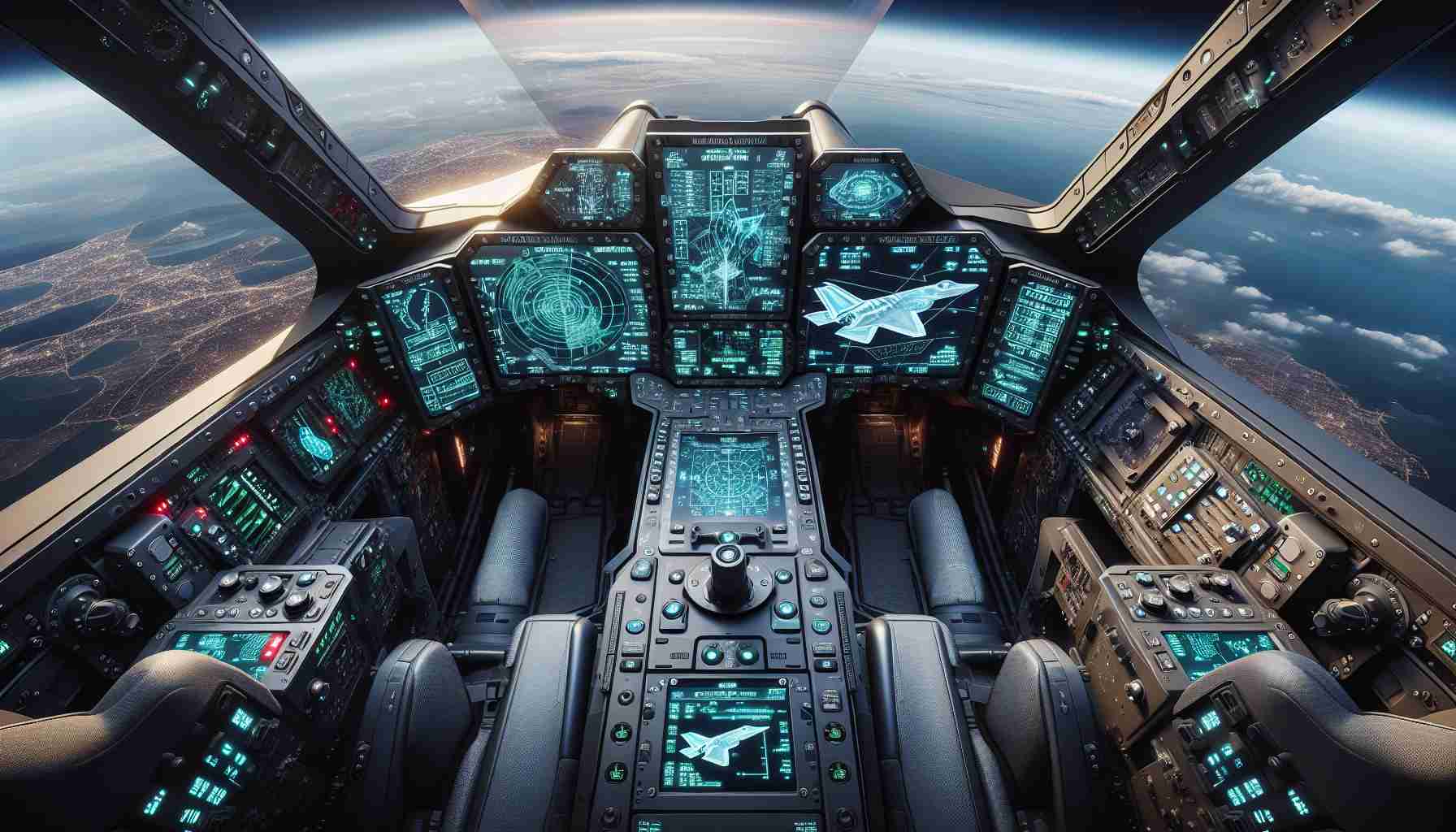The F-35 cockpit represents a significant leap in aviation technology, merging traditional piloting with state-of-the-art digital interfaces. Designed to support pilots in both combat and navigation, the F-35’s cockpit is a digital marvel that sets new precedents in modern military aviation.
Advanced Helmet Technology: At the forefront is the groundbreaking Helmet Mounted Display System (HMDS), which extends the pilot’s awareness well beyond the bounds of traditional cockpit dials. With this technology, pilots receive real-time data projected directly on their visors, including target tracking, warnings, and essential flight metrics, essentially allowing them to “look through” their aircraft’s fuselage.
Touchscreen Symbiosis: Another intriguing feature is the enhanced touchscreen capabilities. Instead of the multitude of physical switches and dials found in traditional fighter jets, the F-35 consolidates critical flight management functions into an advanced, user-friendly touchscreen. This minimizes cockpit clutter and streamlines the decision-making process, allowing for faster and more intuitive pilot commands.
The Seamless Digital Ecosystem: The F-35 cockpit also serves as a comprehensive node in the larger digital ecosystem, sharing and receiving data in real time with allied forces and systems. This interconnectivity offers an unparalleled strategic advantage, providing a complete situational awareness for the pilot, promising an edge in complex combat environments.
In essence, the F-35 cockpit is more than just a physical space; it’s a testament to how far technology can enhance human capabilities, charting a new course for the future of aerial operations.
The F-35: How This Flight Revolution Impacts Global Dynamics
The F-35 Lightning II fighter jet has redefined military aviation with its futuristic cockpit, yet its broader implications extend significantly beyond aviation enthusiasts and military personnel. This marvel of engineering is reshaping international relations, defense tactics, and even economic landscapes.
Global Defense Dynamics: The F-35’s introduction has shifted power dynamics globally. With over a dozen countries incorporating it into their air forces, the aircraft has become a symbol of modern warfare technology. Nations equipped with F-35s, such as the United States and its allies, enjoy a significant tactical advantage, influencing global military strategies and alliances.
Economic Implications: The production and export of the F-35 also have substantial economic impacts. The program supports thousands of jobs and involves numerous industries, from raw materials to high-tech components. However, its high cost has sparked debate: Are the economic benefits worth the investment in such an expensive program?
Environmental Controversy: Another critical aspect is the environmental impact. The F-35, like all military aircraft, consumes vast amounts of fuel and contributes to carbon emissions. As the world moves towards greener alternatives, how will advanced aircraft fit into this paradigm shift?
These implications raise several questions: How do nations balance defense needs with environmental concerns? The answers are complex, navigating between safeguarding national security and striving for sustainable practices.
To dive deeper into the world of advanced aviation and defense technology, visit Lockheed Martin for more insights.








